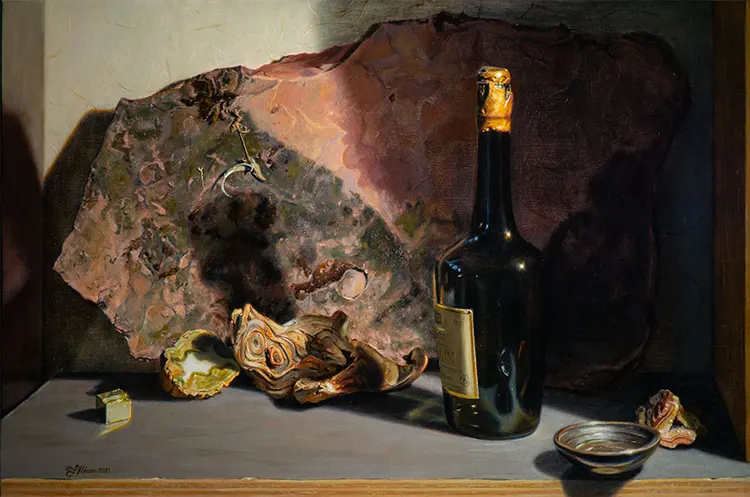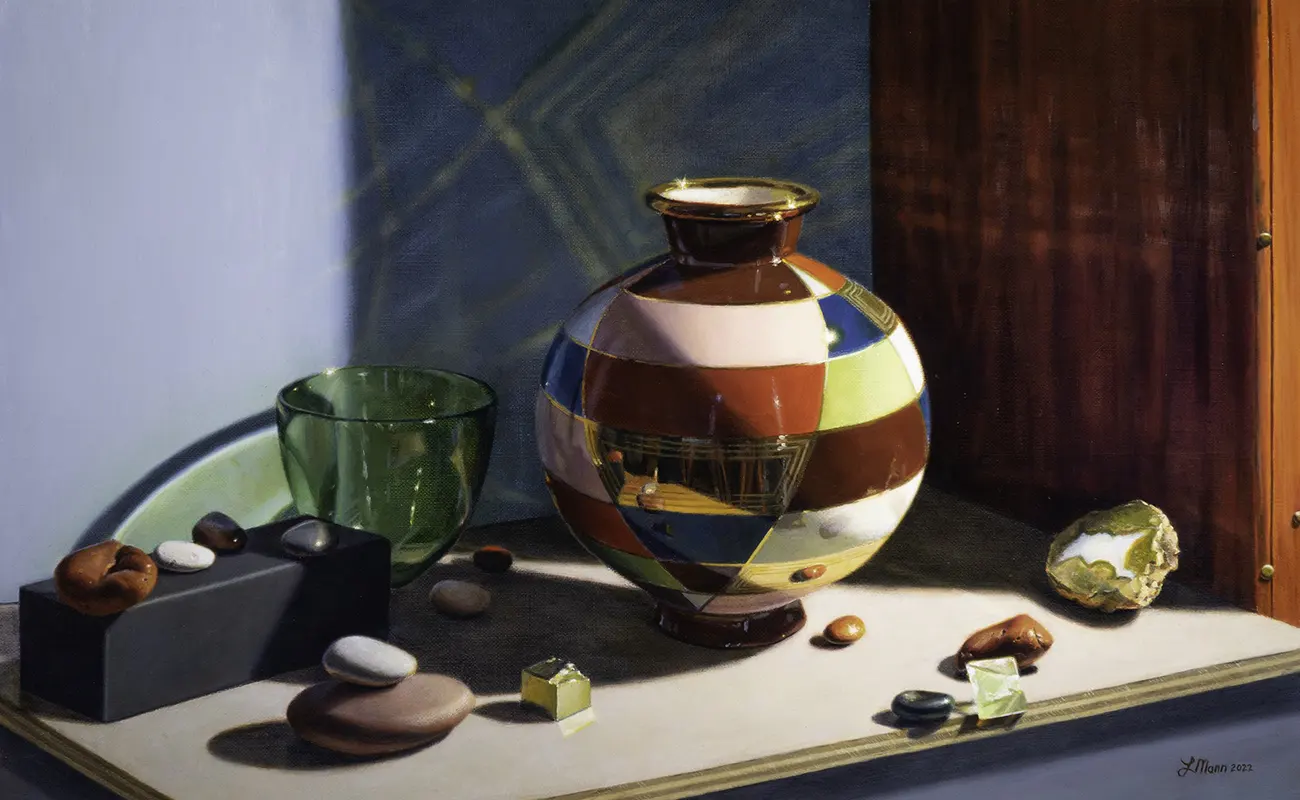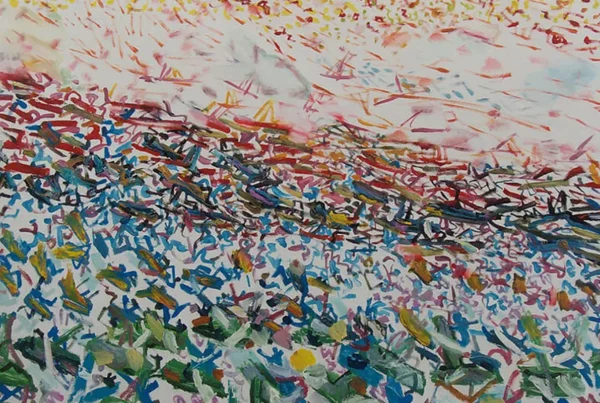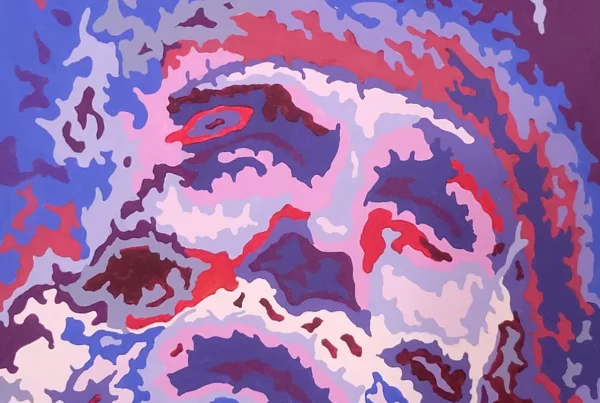“The techniques that I use, I learned from studying the old masters, adapting them to modern tools and my own sensibilities.”
Hailing from Bellevue: Linda Mann’s Illustrious Artistic Journey
Hailing from Bellevue, Washington, Linda Mann is an esteemed painter with an impressive career spanning close to three decades. She obtained her fine arts training from the Gage Academy of Art in Seattle, Washington, and The Academy of Art College in San Francisco, California. The exquisite oil paintings she creates have enjoyed the spotlight in solo exhibitions at illustrious locations such as the Hyatt Regency in Bellevue and Quent Cordair Fine Art Gallery in Jackson, Wyoming. Her work has been showcased in Create! Magazine, and she has been awarded the distinction of Associate Living Master by the Artist Renewal Center.
Mann’s craftsmanship in the domain of painting is primarily focused on creating realist still life oil paintings. These artworks cleverly blend traditional techniques with modern elements, creating a refined reality where critical details are accentuated and extraneous distractions dismissed. Her deft focus selection and the masterful manipulation of light render ordinary objects with depth and meaning, inviting observers to perceive the persistent elegance in a world riddled with disorder. From the confines of her studio, Mann skillfully shapes her surroundings to echo her perception of structure, allure, and drama, yielding miniature paradises on her canvas.
The artist’s commitment to realism is apparent in her approach to painting; she paints exclusively from life, eschewing any reliance on photographs. Her direct observation of objects enables her to represent their true form and color, as well as the intricate interplay of light, with striking precision. Unlike the potential distortions and flattening effect of photographs, her first-hand observation technique presents a challenge that ultimately results in richly textured paintings with solid, convincing forms and luminous light. Mann’s style gravitates more towards romanticism than naturalism; she meticulously curates each artwork, highlighting crucial elements while discarding the superfluous. Every object she paints assumes a role akin to an actor on a stage, bathed in dramatic light, narrating a compelling tale.
Mann’s artistic journey took a pivotal turn during her initial pursuit of a degree in Industrial Design, when she encountered Spanish still life paintings from the 17th century. This ignited her deep-seated passion for painting, prompting her to immerse herself in painting classes and independent study. Primarily self-taught, Mann honed her skills in classical techniques by delving into ancient art technique books. Her relentless quest for perfection and a yearning to encapsulate the fleeting effects of light as perceived by the human eye have continually fueled her artistic voyage.
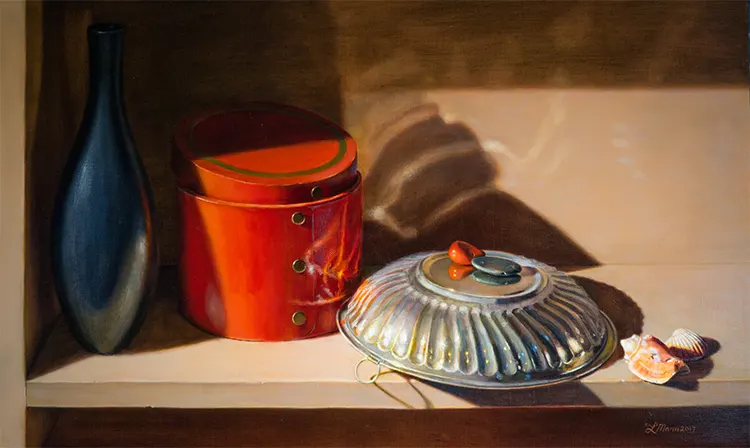
Linda Mann Artistic Techniques: Blending Old Masters with Modern Sensibilities
Linda Mann’s artistic techniques are rooted in the study of old masters, skillfully adapted to modern tools and her unique sensibilities. Her oil paintings are developed through a series of layers, commencing with a meticulous drawing, followed by a monochromatic underpainting, and culminating in numerous layers of color, juxtaposing thick impasto with delicate, thin glazes and body color. This contrast in textures imparts depth and complexity to Mann’s paintings.
Mann’s ideal working environment can be found in her studio, situated in a separate building mere feet from her residence. Constructed by the architect responsible for her house in the 1950s, the studio was originally intended for his artist wife. One wall features a north-facing, floor-to-ceiling window that allows the exquisite, pearly Northwest light to permeate the space. Additional windows offer views of the artist’s garden, while the generous dimensions of the studio accommodate all of her equipment. Immersed in her studio, Mann finds herself enveloped in her own private world.
The inception of most of Mann’s paintings is typically a specific object she is inspired to paint. She places the object on a table, illuminates it, and contemplates its needs and complementary elements. Consequently, she selects additional items in relation to the primary object, which often emerges as the focal point of the painting. Mann carefully searches her home and studio for objects that harmonize well together, emphasizing the importance of a cohesive relationship between the elements in a still life. For example, if she chooses an onion, she may incorporate a shallot as well, given their shared botanical family, thus establishing a sense of unity. However, Mann also ensures that the shallot differs subtly from the onion in size and shape, lending variety and interest to the composition. This balance between unity and variety is a crucial aspect of any artistic composition.
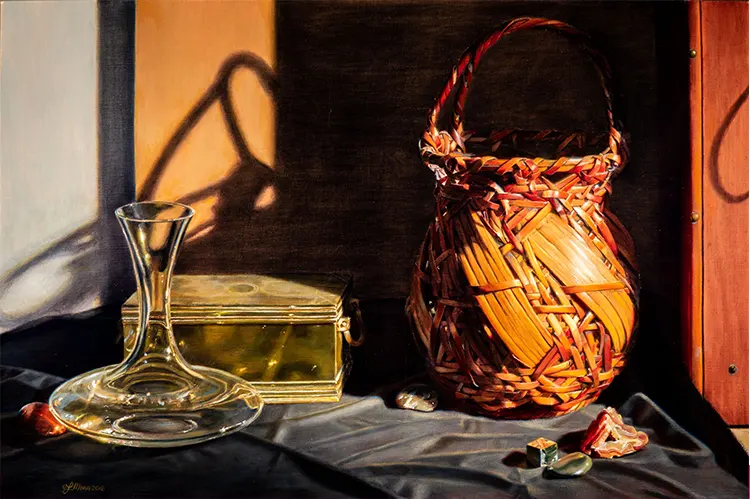
Crafting Composition: Linda Mann’s Intuitive Approach to Artistic Balance
Crafting the composition of her artwork, Linda Mann admits, often presents a greater challenge than the act of painting itself. Artistic norms of composition, steeped in centuries of use, have guided her since her initial study of them. However, Mann’s accumulated years of experience in creating paintings has honed her instinct, enabling her to make compositional decisions with speed and confidence, and with minimal conscious deliberation. For her, an aesthetic choice either possesses a harmonious appeal, or it does not.
Mann’s process involves actively manipulating elements within her setup, periodically stepping back to evaluate the overall picture through a viewfinder – a piece of cardboard featuring a cutout that mirrors the dimensions of her final canvas. By closing one eye, she effectively transforms the three-dimensional scene into a two-dimensional image, allowing her to better assess its potential as a painting. Following this, Mann contemplates the question of aesthetic balance and appeal.
Once satisfied with her setup, she captures it in a photograph, which she then scrutinizes over several days. Any detected issues are addressed with further adjustments to the setup. This iterative process culminates in a full-size, intricate drawing that serves as the blueprint for her painting.
At this point, Mann proceeds to create a full-scale oil study in monochrome. Stripped of the potential distraction of color, this black-and-white study simplifies her evaluation of the composition. This painting is then positioned against a wall in her home, where Mann critically appraises it over the following days.
Her assessment of her compositions is based, not on the three-dimensional setup, but rather on the photographs and studies. Mann finds the human eye perceives a three-dimensional scene differently than a two-dimensional image. When viewed in the latter format, the lines, shapes, and the design they collectively form emerge with greater clarity and prominence.
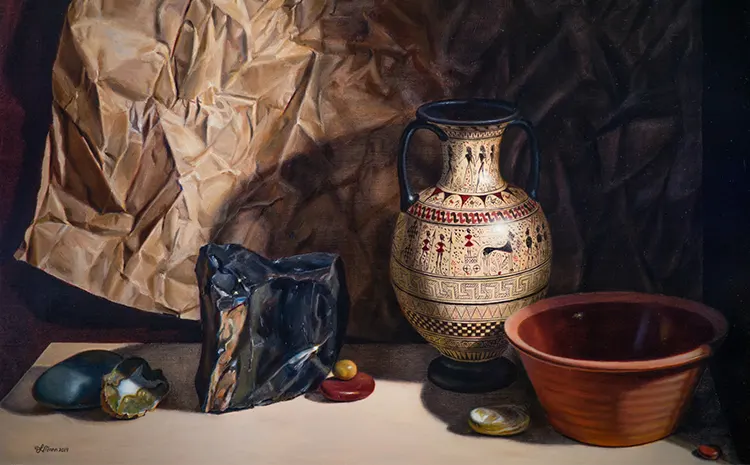
The Creative Process Unveiled of Linda Mann: From Sketches to Masterpieces
The creative process employed by Linda Mann begins with the transference of her initial sketches to a canvas. This is followed by the execution of a monochromatic underpainting, functioning as a foundational layer for the final artwork. Once this groundwork has dried, Mann proceeds to the more intricate stages of her craft, adopting techniques such as direct painting, glazing, and scumbling. The entire process, particularly for a piece with an elevated level of detail, can span a duration of up to seven months.
A key influence in Mann’s artistic journey is Juan Cotan’s masterpiece, ‘Quince, Cabbage, Melon, and Cucumber, c. 1602’. This work, a stunning portrayal of still life, captivated her with its remarkable realism and the deliberate, dramatic graphical design. This combination ignited her passion for still life painting.
For those pursuing realism in their art, Mann offers several pieces of advice. Foremost among these is the recommendation to work from life whenever feasible. She firmly believes that firsthand experience holds an irreplaceable value for artists. Additionally, she encourages the study of masterpieces by iconic artists. Although viewing these works in person is considered optimal, a well-curated art book can serve as a suitable alternative.
Mann further emphasizes the importance of perseverance in perfecting one’s craft and making it visible to the world. This can be achieved through various channels, including social media. She acknowledges that artists cannot dictate the public’s perception of their work or guarantee gallery representation. However, what they can control is their dedication to their art and the effort they put into sharing their creations with the world.
